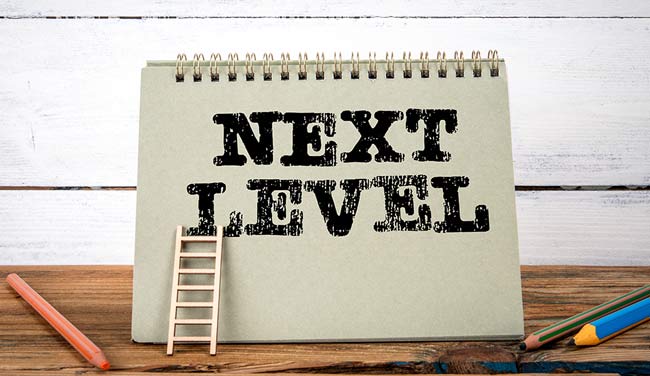26th May 2025

Is your coaching strategy keeping up with today’s tech-driven world?
Not sure? Then it’s high time for a pulse check on how to balance the latest developments with the human touch – using cutting-edge technology while keeping that personal connection that truly drives results.
Ready to find out more? Here we share the highlights from our recent webinar Advanced Coaching Strategies for Contact Centre Leaders – with panellists Carolyn Blunt and MJ Johnson from CallMiner – including how to ensure your coaching remains effective, even as technology continues to transform.
AI-powered tools like coaching assistants, real-time analytics, and sentiment analysis are changing the feedback game. But while these technologies offer valuable insights, experts agree that the heart of effective coaching still lies in human connection.
Think of technology as a powerful support system, not a replacement, for those crucial one-on-one interactions.
A key challenge is always finding time for coaching, especially with those tight service-level agreements and average handling time targets we all have to meet.
One solution discussed was micro-coaching: short, focused interactions that can be really effective without taking up too much time or disrupting the flow of operations. This way, coaching stays a priority even when things are busy.
Rather than thinking of coaching as a one-off thing, organizations should really weave it into the fabric of their culture.
Things like weekly one-on-ones, peer coaching, and even gamified learning can be surprisingly effective for keeping agents engaged and growing, often without needing formal training sessions.
For more benefits of embracing a culture of learning, read our article: 8 Benefits of Creating a Culture of Learning in Your Contact Centre
Coaching works best when it’s personalized. We all learn differently – some of us are visual, some auditory, and others are kinaesthetic learners.
So, adapting your coaching style to each individual’s needs can be really impactful.
Tools like performance dashboards and interaction analytics can be a huge help here, giving you valuable insights into which coaching strategies are most effective for each member of your team.
We all know feedback is crucial for growth, but let’s be honest, sometimes it’s not exactly welcomed with open arms. So, how do we make feedback a more positive and productive experience?
The experts suggested a few key strategies: think open-ended questions, getting agents involved in setting their own goals, and always focusing on constructive feedback rather than making it feel like a punishment.
Role-playing can also be a really helpful tool, letting employees see things from the customer’s point of view.
If you are looking for inspiration customer service role-plays you can use with your staff, read our article: 9 Customer Service Role-Plays
Throughout the webinar, the audience also shared their own expert coaching strategies.
Here are some of the top tips and considerations you can apply in your contact centre too:
Inspired to improve your coaching strategy?
Here’s a 5-point action plan for success:
AI-powered coaching tools are revolutionizing how we give feedback. However, it’s important to think of AI as a powerful assistant, supporting you in the coaching process, rather than replacing the human element altogether.
If you are looking for more information on how AI is transforming the role of agents, read our article: The Superhuman Touch – How to Blend Agents and AI for Maximum Impact
We get it: balancing coaching with daily operations is tough, especially with AHT targets breathing down your neck.
So why not give micro-coaching a try? These quick, meaningful interactions are a great replacement for lengthy sit-downs, and keep coaching effective – whilst making sure it doesn’t take a backseat to daily demands.
For practical methods you can use to keep on top of training in a short-staffed contact centre, read our article: How to Keep on Top of Training in a Short-Staffed Contact Centre
Coaching should be woven into your team’s culture, so take proactive steps to make it happen!
Regular one-on-ones, peer coaching, and gamified learning, for example, will make coaching feel like second nature rather than an extra task on the to-do list.
Not everyone learns the same way, so why coach them all the same? Some people learn best by seeing, others by doing, and some by listening.
So, make time to figure out what works for each team member and adjust your coaching style accordingly. This can be as simple as asking a quick question (“do you prefer seeing, doing, or listening when learning something new?” in your next team huddle!
You can also use performance dashboards and analytics to guide your approach, experiment with providing the same material in different formats, or have more in-depth discussions in your next one-to-ones.
For advice on choosing the best coaching model for your agents, read our article: Contact Centre Coaching Models: Which Is Best for Your Coaching Sessions?
Nobody loves being told that what they’re doing is wrong. So instead of just delivering feedback and talking AT your agents, get them involved in the process to soften the blow.
Change up the style of your coaching sessions to ask open-ended questions, let agents set their own goals, and even try role-playing exercises to help them see things from the customer’s point of view.
So, in closing – mastering advanced coaching strategies isn’t just about the latest tech!
The key is in finding balance between technology and the human touch – focusing on personalization, keeping agents engaged, and supporting their ongoing development.
That’s how contact centre leaders build high-performing teams!
If you are looking for more information on how to improve your contact centre coaching, read these articles next:
Reviewed by: Xander Freeman